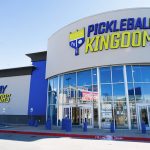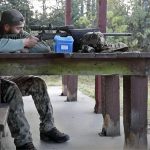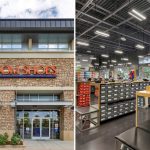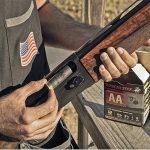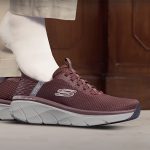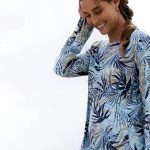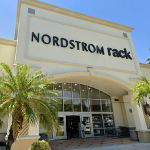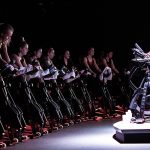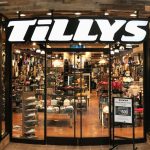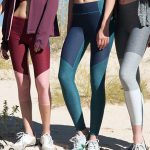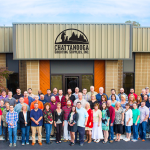U.S. consumers purchased nearly 7% more pairs of athletic footwear in 2002 than in 2001, but the average price paid per pair fell by 4.2%. The result was that total spending rose only 2.5%, according to research by The NPD Group.
Despite the small gain in overall spending, athletic footwear outperformed the footwear industry as a whole. Total spending for footwear of all kinds fell 5% in 2002.
“Athletic footwear sales weakened in the fourth quarter of 2002 following strong results in the second and third quarters,” said Gregg Hartley, SGMA Internationals vice president of programs and operations. “Over the past five months or so, the athletic market has weakened because of fears about war, terrorism and the economy as a whole. Spending in the first quarter of 2002 was down about 5%, but a strong recovery occurred in the second and third quarters (up 6.6% and 10.7%, respectively). Athletic footwear purchases for the fourth quarter of 2002 declined by 2.1%. SGMA International expects a spending increase of about 4% in 2003.”
Total spending for athletic footwear in 2002 was $15.69 billion, up from $15.31 billion in 2001. Total pairs purchased were 428.62 million, compared to 400.86 million in 2001. Spending for mens shoes rose 2.5% to $8.82 billion, from $8.60 billion in 2001; womens shoes were essentially unchanged at $4.30 billion; and childrens shoes rose 7% to $2.57 billion from $2.40 billion. Spending for footwear of all kinds was $40.46 billion in 2002, compared to $42.58 billion in 2001.
According to The NPD Group, 57% of buyers in 2002 reported that they purchased their athletic footwear on sale. The average price paid for a pair of athletic shoes fell to $36.61 from $38.20 in 2001.
“Retro, or classic, looks remained very popular in 2002,” said Amy Hyland, The NPD Groups director of footwear. “Retro basketball styles are making a resurgence and retro running and low performance shoes remain very popular.”
According to point-of-purchase data assembled by NPD, spending for retro and classic athletic footwear rose 11.4% in 2002, while spending for non-retro styles fell about 2%.
“Casual looks are popular in fashion footwear as well as athletic footwear,” Hyland said. “Spending for casual fashion footwear was up 13% in 2002. Retro styles are also popular in apparel.” Hyland pointed to the current consumer rage for velour sweat suits that echo fashions from the 1970s and 80s.
In athletic footwear, basketball styles continued to grow in popularity. Consumers spent roughly $3.25 billion on basketball shoes in 2002, up 17% from 2001. This follows a gain of more than 10% in 2001 over 2000. Once the most popular style, basketball gave way to running in the late 1990s before starting a new popularity surge in late 2000. Running styles remained the most popular athletic looks, attracting total spending of $4.49 billion, essentially the same as in 2001. Tennis and skateboard styles also achieved double-digit growth, reflecting the current fashion for casual looks.
SGMA International, owner of The Super Show®, is the global business trade association of manufacturers and marketers of sports apparel, athletic footwear, licensed products, fitness and sporting goods equipment and related business/professional organizations. SGMA International advances members interests through a major trade show, market research, communications, public policy, sports promotion and international business development programs.
About the Survey. The NPD Group uses the Internet to survey more than 35,000 people every week about their purchases of footwear. The firm, headquartered in Port Washington, N.Y., specializes in consumer research and point-of-sale data to analyze buying behavior in more than 20 industries. For more information: www.npd.com.
| U.S. ATHLETIC FOOTWEAR MARKET MARKET ESTIMATES Consumer Spending in Billions of Dollars |
|||||
| 1999 | 2000 | 2001 | 2002 | Change 00-01 |
|
| Men’s | $8.037 | $8.366 | $8.602 | $8.816 | +2.5% |
| Women’s | 4.194 | 4.313 | 4.312 | 4.303 | -0.2% |
| Children’s | 2.327 | 2.348 | 2.398 | 2.574 | +7.3% |
| TOTAL | $14.558 | $15.027 | $15.312 | $15.693 | +2.5% |
|
Pairs Purchased in Million
| |||||
| 1999 | 2000 | 2001 | 2002 | Change: 00-01 |
|
| Men’s | 161.661 | 173.687 | 177.434 | 193.175 | +8.9% |
| Women’s | 115.755 | 119.574 | 117.183 | 121.185 | +3.4% |
| Children’s | 102.986 | 111.328 | 106.238 | 114.263 | +7.5% |
| TOTAL | 380.402 | 404.589 | 400.855 | 428.623 | +6.9% |
| CONSUMER SPENDING BY QUARTER in Billions of Dollars |
||||
| Q1 | Q2 | Q3 | Q4 | |
| 1999 | $3.433 | $3.291 | $4.024 | $4.279 |
| 2000 | 3.838 | 3.454 | 3.967 | 4.053 |
| 2001 | 3.650 | 3.684 | 4.393 | 3.966 |
| Change 00-01 |
-4.9% | +6.6% | +10.7% | -2.1% |
|
AVERAGE PRICE PER PAIR |
|||||
| 1999 | 2000 | 2001 | 2002 | Change: 00-01 |
|
| Men’s | $49.72 | $48.17 | $48.48 | $45.64 | + 0.9% |
| Women’s | $36.24 | $36.07 | $36.80 | $35.51 | + 3.4% |
| Children’s | $22.59 | $21.09 | $22.58 | $22.52 | – 0.3% |
| AVERAGE | $38.27 | $37.14 | $38.20 | $36.61 | – 4.2% |
Source: NPD Fashionworld
|
|
||||
| Style | 2001 | 2002 | Change: 00-01 |
2002 Share of Market |
| Running | $4.486 | $4.488 | — | 28.6% |
| Basketball | 2.771 | 3.249 | +17.2% | 20.7% |
| Cross-training/fitness | 2.174 | 2.009 | – 7.6% | 12.8% |
| Walking | 1.210 | 1.099 | – 9.2% | 7.0% |
| Low performance | .812 | .863 | + 6.3% | 5.5% |
| Hiking | .674 | .659 | – 2.2% | 4.2% |
| Tennis | .566 | .659 | +16.4% | 4.2% |
| Sports sandals | .352 | .314 | -10.8% | 2.0% |
| Recreational boots | .276 | .267 | – 3.3% | 1.7% |
| Skateboard | .214 | .251 | +17.3% | 1.6% |
| Baseball/Softball | .214 | .235 | + 9.8 | 1.5% |
| Soccer | .168 | .220 | +30.9% | 1.4% |
| Aerobic | .199 | .188 | – 5.5% | 1.2% |
| All other | 1.196 | 1.192 | – 0.3% | 7.6% |
| TOTAL | $15.312 | $15.693 | + 2.5% | 100% |
| Source: The NPD Group, Inc. |
||||
| Recreational boots = Hunting, fishing, waterproof All other = football, golf, volleyball, work/industrial styles, etc. |
||||
|
NOTE: NPD uses point-of-sale information it receives from sporting goods, specialty and department stores and national chains to calculate the trends reported in spending by style. |
||||

